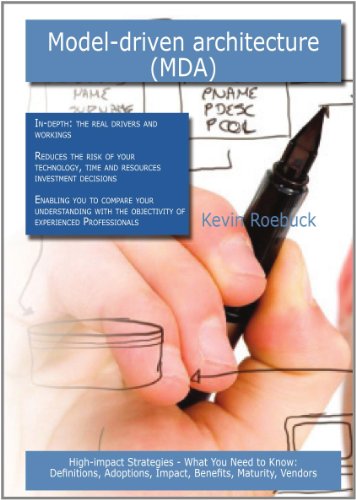Enterprise Information Systems Engineering: The MERODE Approach (The Enterprise Engineering Series)
暫譯: 企業資訊系統工程:MERODE 方法(企業工程系列)
Monique Snoeck
- 出版商: Springer
- 出版日期: 2014-10-01
- 售價: $3,730
- 貴賓價: 9.5 折 $3,544
- 語言: 英文
- 頁數: 280
- 裝訂: Hardcover
- ISBN: 3319101447
- ISBN-13: 9783319101446
-
相關分類:
Domain-Driven Design
海外代購書籍(需單獨結帳)
相關主題
商品描述
The increasing penetration of IT in organizations calls for an integrative perspective on enterprises and their supporting information systems. MERODE offers an intuitive and practical approach to enterprise modelling and using these models as core for building enterprise information systems. From a business analyst perspective, benefits of the approach are its simplicity and the possibility to evaluate the consequences of modeling choices through fast prototyping, without requiring any technical experience. The focus on domain modelling ensures the development of a common language for talking about essential business concepts and of a shared understanding of business rules. On the construction side, experienced benefits of the approach are a clear separation between specification and implementation, more generic and future-proof systems, and an improved insight in the cost of changes.
A first distinguishing feature is the method’s grounding in process algebra provides clear criteria and practical support for model quality. Second, the use of the concept of business events provides a deep integration between structural and behavioral aspects. The clear and intuitive semantics easily extend to application integration (COTS software and Web Services).
Students and practitioners are the book’s main target audience, as both groups will benefit from its practical advice on how to create complete models which combine structural and behavioral views of a system-to-be and which can readily be transformed into code, and on how to evaluate the quality of those models. In addition, researchers in the area of conceptual or enterprise modelling will find a concise overview of the main findings related to the MERODE project.
The work is complemented by a wealth of extra material on the author’s web page at KU Leuven, including a free CASE tool with code generator, a collection of cases with solutions, and a set of domain modelling patterns that have been developed on the basis of the method’s use in industry and government.
商品描述(中文翻譯)
隨著資訊科技在組織中的滲透日益增加,對企業及其支援資訊系統的整合性觀點變得愈加重要。MERODE 提供了一種直觀且實用的企業建模方法,並將這些模型作為構建企業資訊系統的核心。從商業分析師的角度來看,這種方法的優點在於其簡單性以及能夠通過快速原型製作來評估建模選擇的後果,而不需要任何技術經驗。專注於領域建模確保了發展一種共同語言,以便討論基本商業概念以及對商業規則的共同理解。在建設方面,這種方法的經驗性優勢在於明確區分規範與實現、提供更通用且未來可擴展的系統,以及改善對變更成本的洞察。
這種方法的一個顯著特徵是其基於過程代數的基礎,為模型質量提供了明確的標準和實用的支持。其次,使用商業事件的概念在結構和行為方面提供了深度整合。清晰且直觀的語義易於擴展到應用整合(商用現成軟體和網路服務)。
本書的主要目標讀者是學生和實務工作者,因為這兩個群體都將受益於其關於如何創建結合系統結構和行為視圖的完整模型的實用建議,這些模型可以輕鬆轉換為程式碼,並且如何評估這些模型的質量。此外,從事概念或企業建模研究的學者將會發現有關 MERODE 專案的主要發現的簡明概述。
本書還附有大量額外資料,這些資料可在 KU Leuven 的作者網頁上找到,包括一個免費的 CASE 工具及其程式碼生成器、一系列案例及其解決方案,以及一套基於該方法在產業和政府中使用而開發的領域建模模式。











